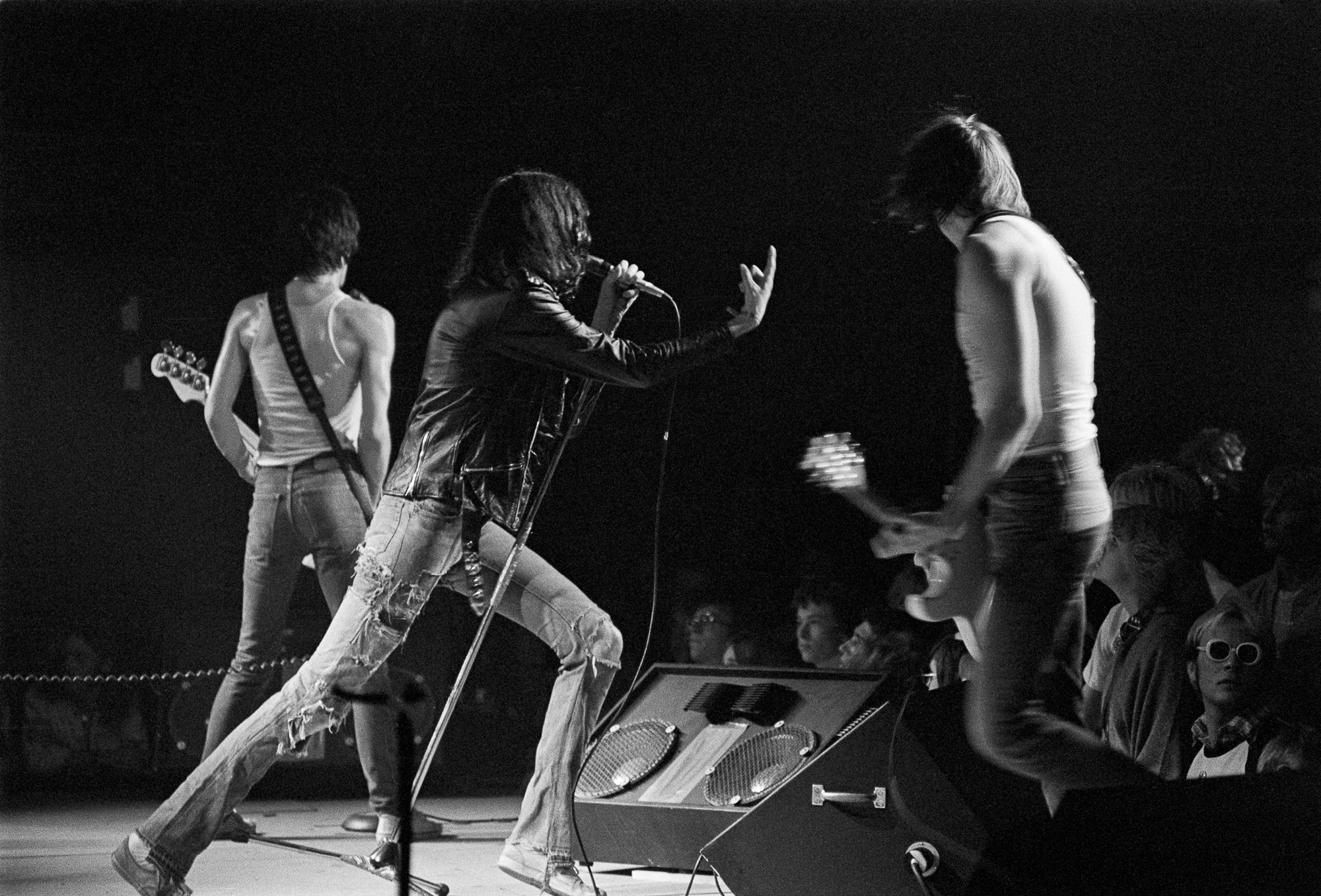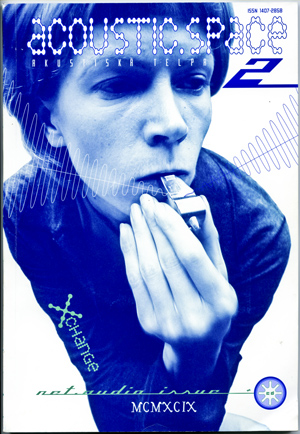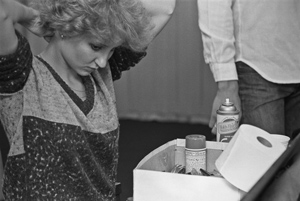Vytautas [Michelkevičius] interviews me as we sit in Konstantino Sirvydo skveras not far from the university. He titles the article “Creativity = energy movement.” I write these words thirteen years later. Precisely when I need to be reminded that creativity *is* energy movement. Movement has ceased on the scale that I was used to then. 2004 was an incredibly busy year for my nomadic networking praxis — Arizona, New Jersey, Iceland, Copenhagen, Kiel, Lübeck, Bremen, Helsinki, Suomenlinna, Vilnius, Tallinn, Berlin, New York, Fort Myer, Phoenix, Prescott, Colorado, Durango, Boulder, Moab, Kayeenta, Copenhagen, Vilnius, Nida, Copenhagen, Reykjavík, Akureyri, Oslo, Trondheim, Hrísey, Århus, Glen Ridge, Baltimore, California, Livermore, Ukiah, Prescott, Kelso, Amboy, Livermore, and so on into the next year. The epitome of the nomad. The experiencing of life as a stream of abundance and not a plateau of static need. A nomad needs no future. How comes it that life has reified against all I said and did to keep that stasis, that dis-conscious, la petite mort, as far away as possible, or as close to the heart as its beating? To simply be in the many moments that track one after the other. The country, city, and state names belie the real nature of the process: it was all about the humans, the encounters, the face-offs, the arguments, the dialogues, the exchange of creative energies across the network and across the space that intervened between each life. The encounters were, are, what forms life and living, as my energy winds down. As my energy dies. There is *no* time. And I have made the conscious choice of leaving prematurely, stepping away from all the life that I had, to treat it as simply an artifact. Treating the trajectory, the vital path, as nothing more than happenstance of a past life, or a life lost in the complexities of itself, or a life that is only written about.
20040910-7md_article1 + 1 = 3
[ED: This is the third report on selected actions and flows in the neoscenes occupation (nso)[1] network, published in acoustic.space #4 (2003 ISSN 1407-2858). Since the last report, learning and networks [2] in the acoustic.space #3 (2000 ISSN 1407-2858), nso has spun off two major networking projects and is constantly involved in a heavy creation-filtering-redirection of network energies on a sustained multi-channel and daily basis. This article will briefly look at these two projects, “expand” [3] and “<di>fusion” [4], and it will comment on the matrix of practice that the projects grew from.]
So it goes.
By nature, networks are human-scaled and exist in human-scaled time. They develop at the speed of life. neoscenes was never a fast solution caught in the cross-fire hype of media-convergence-mania: and it definitely didn’t burst in the dot.com vacuum. neoscenes is dot.net [5]. The slow evolution of the neoscenes network is a vehicle for learning, creating, and sharing that does not seek stasis, spectacle, or speed. more “1 + 1 = 3”
neoscenes occupation: an international network-building project
[ED: written and published as part of the acoustic.space initiative established by friends Rasa Smite and Raitis Smits at the re-lab in Riga, Latvia net audio issue 1999 ISSN 1407-2858.]
The basic concept for the project is rooted in several facets of my former and current involvement as a networker, and my broad experience in arts and design education in Europe and North America during the last fifteen years.
Having taught or lectured in, and visited many tens of art and design institutions, and engaged in wide-ranging discussions with many educators, I had gradually come to the conclusion that much of the (formal) educational process in the developed world is irrelevant, dead, or dying. I viewed neoscenes occupation as a vehicle for the re-creation and renewal of the learning process—applying a series of conditions to make it an “omni-directional flow of energies with a force multiplied far beyond the meat count and with a reach that is far ahead of the game.”
Rhetoric aside, the project has several interlinked concepts and goals relating to creating a viable independent social network of people who share creative aspirations.
Dialogue is at the core of the whole nso idea — dialogue as the bi-directional movement of energies between any two people who engage each other in honest and open exchange. Dialogue that moves in opposition to the oppression of monologue and centralized patriarchal infotainment; that stands as two quiet voices versus the blasting inferno of social emission. Dialogue, as pure expression of heart and soul, is the core of all meaningful activism. more “neoscenes occupation: an international network-building project”
Review: MLT Performance Stumbles
ED: This Review appeared in the “Oredigger” student newspaper at the Colorado School of Mines, 12 November 1980.
Director Mike Sides; Assistant Director: Eleanor Burton; Technical Director: Daniel Rich
GOLDEN — Last week’s MLT production of the Broadway mystery/comedy, Catch Me If You Can, marks a certain celebration point for the MLT company here at the “World’s Foremost.” Ten years from its humble beginnings, MLT has become a mature, experienced organization that has delivered some stunning theater performances not only by Mines cultural measures, but by real-world standards. Among many other past and present members of the company, Mike Sides, director of Catch Me and Dan Rich, technical director, both have impressive real-world theater credits.
This final coming of age for the MLT also marks a special point for this reviewing critic. Is MLT ready to have a real-world critique? (I must note that I am an avid supporter of MLT in spirit if nothing else; my friend and long-time fellow Mines inmate, MLT’er Dan Rich asked me specifically to review last week’s performance for the Oredigger.)
Opening night seemed fairly relaxed as I prowled around shooting photos for an upcoming Mines Magazine article on the MLT. Too relaxed, it seemed to me. None of the usual opening night insanity and jitters; maybe that should have cued me in for the upcoming show. I must agree that opening night is a fair excuse for some floundering. but Thursday’s opening seemed to be replete with some serious problems that dress rehearsal should have ironed out. Past performances were seldom so rough, although I did miss the previous week’s performances and cannot compare them to Catch Me.
The technical problems were most distressing after being accustomed to smooth working stage and lighting sets in the past. However, even more awkward were the queuing bluffs — something that should be cleared up before, not during opening night.
As far as the acting, I will have to be kinder. Outstanding player praise must go to Bob Fisk as the hysterically funny Jewish deli owner, Sidney, whose purported last words were “Who’s minding the store?” As a veteran MLT actor, Bob pumped maximum energy and personality into his supporting role. Close behind was Michelle Leonard as the surrogate Mrs. Corban. She seemed to slide into the part of a coy, svelte, and scheming female with unquestionable realism. Jon Bush kept things rolling with his boffo, one-liner delivery as the supposedly simple country cop, Inspector Levine. The leading part of David Corban was not played to its fullest, however, even though B. J. Truskowski seemed to overwork the part. Catch Me admittedly, in this critic’s opinion, was not the strongest vehicle for the MLT to work with, although it did have a fair share of good one-liners, faux pas, and a real surprising twist at the end. If fell short on complete entertainment value when compared to last year’s fast-paced Feiffer’s People and Play It Again, Sam.
Overall, no kudos this time, although I will grant the MLT another mild success. Future productions will have to concentrate on the technical problems as well as actor preparedness. I am not so sure that MLT is ready for the rumored musical production scheduled for next spring, but if past performances are any indication, I hope they will at least give it a try — the Mines community at large and MLT have nothing to lose.
Obscure Alternatives: Meat On Platter Is Tasty Morsel
[ED: This regular column appeared in the “Oredigger” student newspaper at the Colorado School of Mines, 30 October 1979. neoscenes started a music review column “Obscure Alternatives” (borrowing the title of British new wave band Japan‘s second album).]

GOLDEN — Talking Heads Fear Of Music (Sire Records); Robert Palmer Secrets (Island/Warner Bros.)
Fortunately for Obscure Alternatives, being a lazy columnist, the Talking Heads new album, Fear of Music, and Robert Palmer’s release, Secrets, cover the complete spectrum of today’s New Wave crazed world: and so it goes. Claiming to be beyond the CBGB’s-Mudd-Club-hype syndrome, the Heads have embarked on another vapid meander into the noumenal world. Songs with titles such as “Air,” “Heaven,” and “Drugs” deceive one into thinking this is just another Heads wave at society through a frosted window pane.
Light as this album may seem upon casual tracking, there is meat on the musical platter for those willing to look and listen. Recorded under the auspices of electronic wizard Brian Eno, with a Record Plant Remote Truck at Heads’ Chris and Tina’s loft in Long Island City, N.Y., the album is without a doubt, a tasty morsel. There is the feeling of stopping, looking, and absorbing lyrically a most detailed photograph of the dirty side of every life around. In a fascinating song, “Life During Wartime,” the Heads cry out that “This ain’t no party. This ain’t no disco. This ain’t no fooling around.”, recognizing the less observed side of music production — the slogging, the grit and the grind. On one cut. “I Zimbawa,” Robert Fripp cameos with some interesting guitar work. With lyrics that echo and laugh at the void of New York’s chic society, there is a terminal aura of world-weariness that pervades both the vocals and the instrumentals. All considered, the album is a modern version of “The Wasteland.” by T.S. Eliot; both musically and lyrically a vivid, detailed personal glimpse of the world-that-is.
Displaying the recently developed New York/Los Angeles music schism, the step from the Heads to Palmer is unsettling. Coming from an optimized transformation of thought to music, and going to a minimized transmutation of feeling to commerciality can leave one, yes, feeling heady and nauseous. Palmer’s work is merely a warmup for the coming generation of pop-rock debutantes. Despite a tight, hard-working backup band, Palmer never comes up with anything better than the average 3.2 bar band. Musically the most attractive song on the album is the aptly chosen single. “Bad Case of Loving You (Doctor, Doctor).” Replete with Top-40 love hooks, the release, Palmer’s first with Island, has one interesting song, “Jealous,” a very simple, but catchy tune wrapped around equally simple lyrics. Obscure Alternatives hopes that this album does not reflect the minds of the music consumer—fun to be around, but no substance—else the Rock of the 80s could be a real letdown. Albums courtesy Independent Records, Washington Avenue in downtown Golden.



